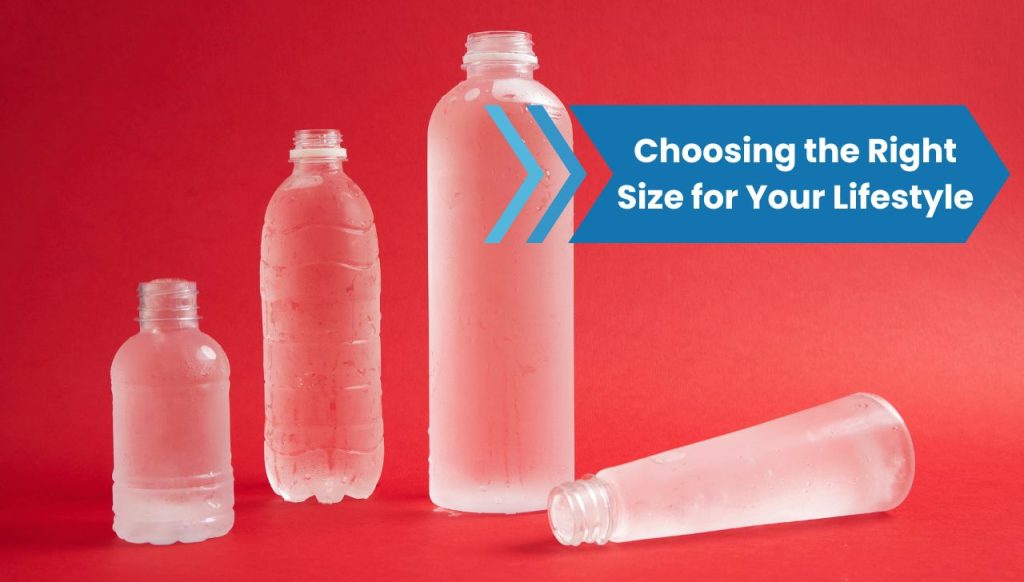When it comes to staying hydrated, not all water bottles are created equal. From compact 12-ounce sippers to hefty 64-ounce jugs, water bottle sizes can seriously affect your routine—more than you’d think. Whether you’re a casual gym-goer, a desk-bound worker, or constantly on the move, the right size can make hydration feel effortless—or like a chore. So, how do you choose? Let’s explore how bottle size impacts convenience, hydration habits, and your daily grind.
Common Water Bottle Sizes and Their Uses
First, let’s break down the most common water bottle sizes and where they usually shine:
- 8 oz to 12 oz (about 250-350 ml): These petite options are often used for kids or short outings. They’re compact and light, perfect for slipping into a purse or a lunchbox.
- 16 oz (roughly 500 ml): This is a standard “grab-and-go” size. It’s enough for a single session at the gym or a short trip, and it usually fits in most car cup holders.
- 20 oz to 24 oz (600-700 ml): A solid middle-ground. These are popular among office workers, walkers, and light exercisers. They offer decent capacity without being too bulky.
- 32 oz (about 1 liter): Ideal for those who drink much water but still want something relatively portable. Think gym rats and outdoor enthusiasts.
- 64 oz and above (1.9 liters+): We’re entering serious hydration territory. These bottles are for long days without refill options—like road trips, hikes, or people working long outdoor shifts.

Choosing the Right Size for Your Lifestyle
So, how do you pick the right one? Honestly, it depends on how and where you use it. For example, a larger bottle makes sense if you’re running errands all day and don’t want to keep refilling. But a medium bottle might be all you need if you’re just looking for a hydration boost between meetings.
Consider these questions:
- Do you have easy access to refills?
- Will you be carrying it in a bag or by hand?
- How much water do you realistically drink in a few hours?
The answers will steer you toward a size that fits seamlessly into your daily flow rather than feeling like a clunky obligation.
The Benefits of Smaller Water Bottles
Smaller bottles often get dismissed as “not enough,” but they’ve got some real perks. For starters, they’re incredibly portable. Need to run a quick errand? Throw a 12 oz bottle in your tote and go. They’re also great for kids or anyone trying to monitor their intake.
Another underrated benefit? They encourage more frequent refilling. That sounds like a hassle, but it keeps the water fresher and colder—especially in warmer months. Plus, you’re more likely to clean them regularly because they’re quick to rinse and dry.
Why Medium-Sized Water Bottles Are Popular
The 20-24 oz range is like the goldilocks zone of water bottles: not too big, not too small, just right. That’s why it’s probably the most popular category out there.
These bottles fit easily into backpacks, cup holders, and bike cages. They’re manageable in weight and typically hold enough to get you through a good portion of the day. Plus, most insulated or smart bottles come in this size, giving you tech-forward options without the bulk.
And if aesthetics matter (and, honestly, they do), this size is where you’ll find the most variety in colors, materials, and lid styles.
Large Water Bottles: Best for Hydration on the Go
You know those gallon jugs some people carry? They’re not messing around—and for good reason. Large bottles are the champions of staying hydrated without needing a refill. Whether you’re on a long hike, doing manual labor, or training for a marathon, these bottles eliminate the need for frequent stops.
Yes, they’re heavier and bulkier. But they often come with handles, built-in straws, or measurement markers to help you keep track. Some even double as dumbbells if you’re feeling creative at the gym (no, seriously).
They’re also great if you measure your daily intake in one go. Fill it once in the morning, and you know exactly how much you’ve had by the end of the day.
Specialty Water Bottles: When Size Matters More Than Convenience
Then there are the bottles designed for particular needs. Think collapsible bottles for travelers, filtered bottles for hikers, or infusion bottles for those who like a hint of lemon or cucumber in their drink.
In these cases, size takes a backseat to function. A collapsible bottle might only hold 16 oz, but it’s perfect when space is limited (like on a plane or in a backpack). Filtered bottles are often medium-sized, balancing capacity with the space needed for filtration components.
There are even dual-chamber bottles for athletes—one side for water, the other for an electrolyte mix or energy drink. Here, it’s not just about volume but versatility.
Conclusion
The “perfect” water bottle size isn’t about one-size-fits-all—it’s about what fits you. Think about your day: where you go, what you do, and how often you refill. Whether it’s something sleek for your bag or a big bottle that keeps up with your workouts, size matters more than you’d expect. Choose with intention, and your water bottle becomes more than just a container—it becomes part of your routine.

Suzana explores how culture, geography, and tradition influence the sizes of everyday items—from clothing to furniture. With international research experience, he brings global perspective to Sizello’s content.


Leave a Reply